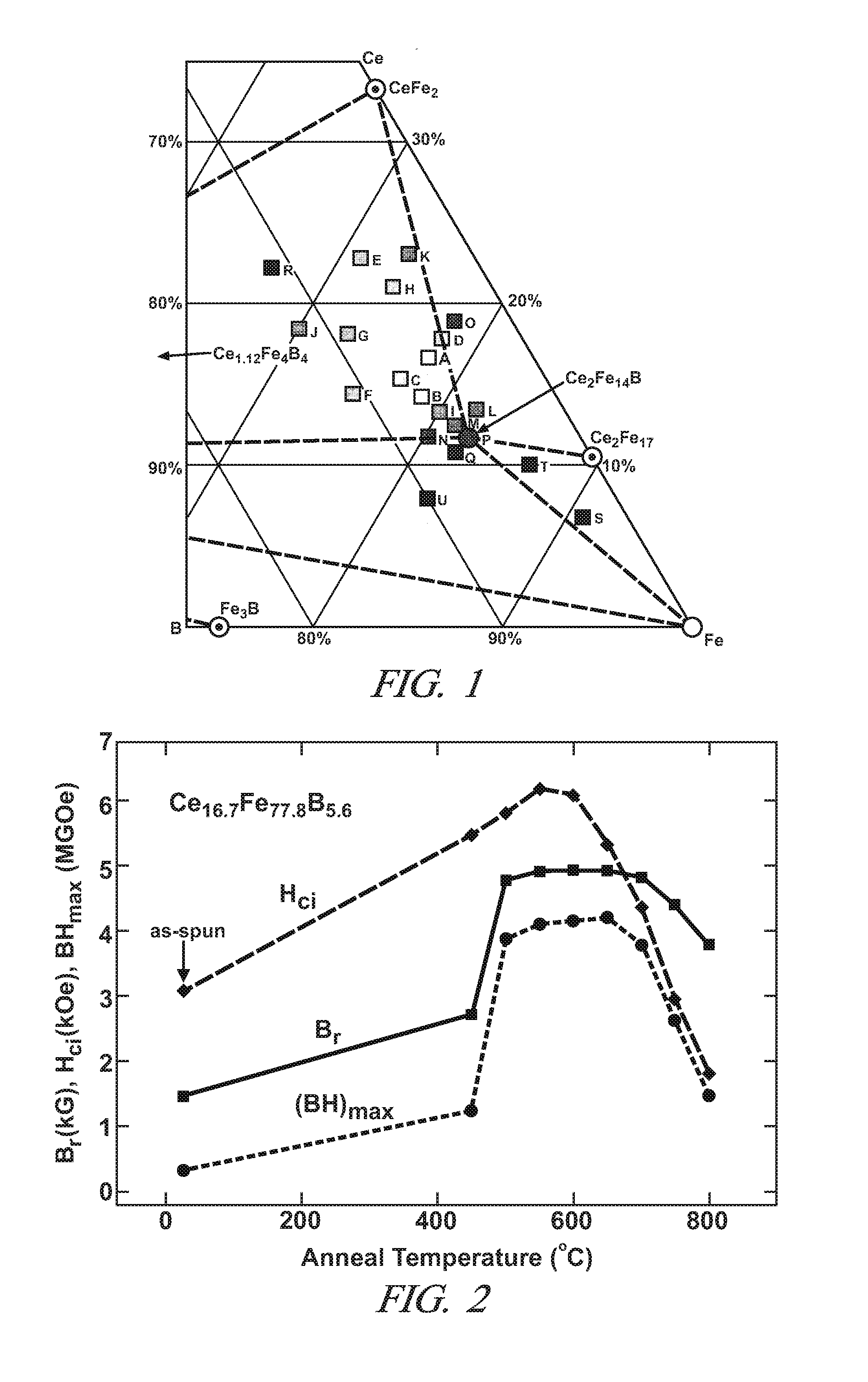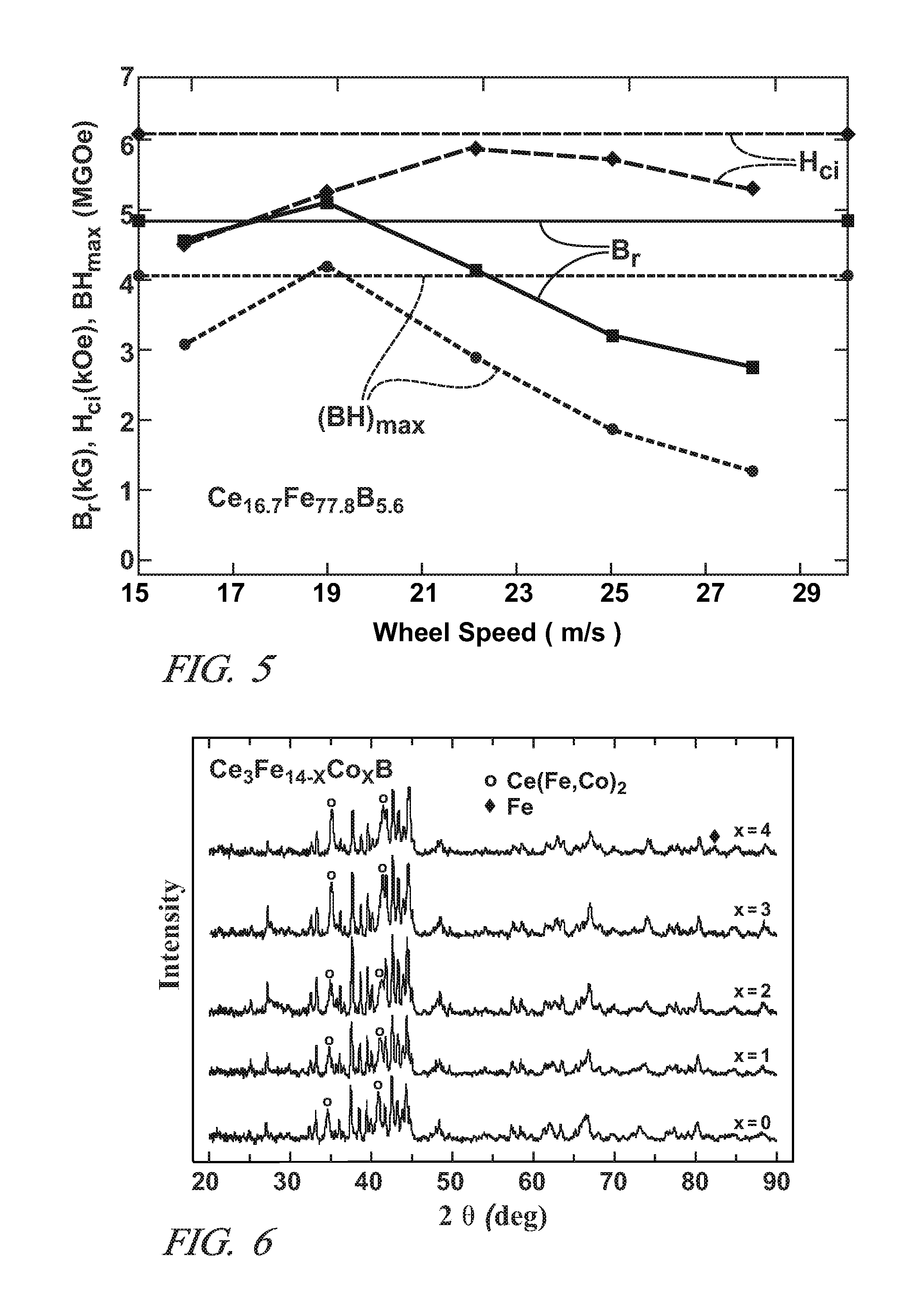Cerium based permanent magnet material
a permanent magnet material and titanium based technology, applied in the field of rare earthironboron permanent magnets, can solve the problems of nd is expensive, pr, dy, and tb are also expensiv
- Summary
- Abstract
- Description
- Claims
- Application Information
AI Technical Summary
Benefits of technology
Problems solved by technology
Method used
Image
Examples
Embodiment Construction
[0026]While the intrinsic magnetic properties of Ce2Fe14B (saturation magnetization 4πMs=11.7 kG and anisotropy field Ha=26 kOe at 295K, Curie temperature Tc=424K) are inferior to those of Nd2Fe14B (4πMs=16 kG, Ha=73 kOe, Tc=585K), they are nevertheless sufficient to offer the potential for producing Ce—Fe—B magnets having hard magnet characteristics intermediate between those of ferrites and Nd—Fe—B.
[0027]Since the Ce—Fe—B phase diagram (a section of which is illustrated in FIG. 1) is distinct from that of Nd—Fe—B in several respects, featuring in particular the compound CeFe2 having no Nd analog under normal conditions, it was anticipated that the Ce—Fe—B composition yielding the most favorable hard magnet properties via rapid solidification might well differ from the optimum composition for Nd—Fe—B. Accordingly, a range of compositions was explored that is indicated by the squares in the section of the Ce—Fe—B phase diagram near the Fe vertex shown in FIG. 1 and detailed in Table...
PUM
| Property | Measurement | Unit |
|---|---|---|
| temperature | aaaaa | aaaaa |
| Tc | aaaaa | aaaaa |
| Tc | aaaaa | aaaaa |
Abstract
Description
Claims
Application Information
 Login to View More
Login to View More - R&D
- Intellectual Property
- Life Sciences
- Materials
- Tech Scout
- Unparalleled Data Quality
- Higher Quality Content
- 60% Fewer Hallucinations
Browse by: Latest US Patents, China's latest patents, Technical Efficacy Thesaurus, Application Domain, Technology Topic, Popular Technical Reports.
© 2025 PatSnap. All rights reserved.Legal|Privacy policy|Modern Slavery Act Transparency Statement|Sitemap|About US| Contact US: help@patsnap.com



